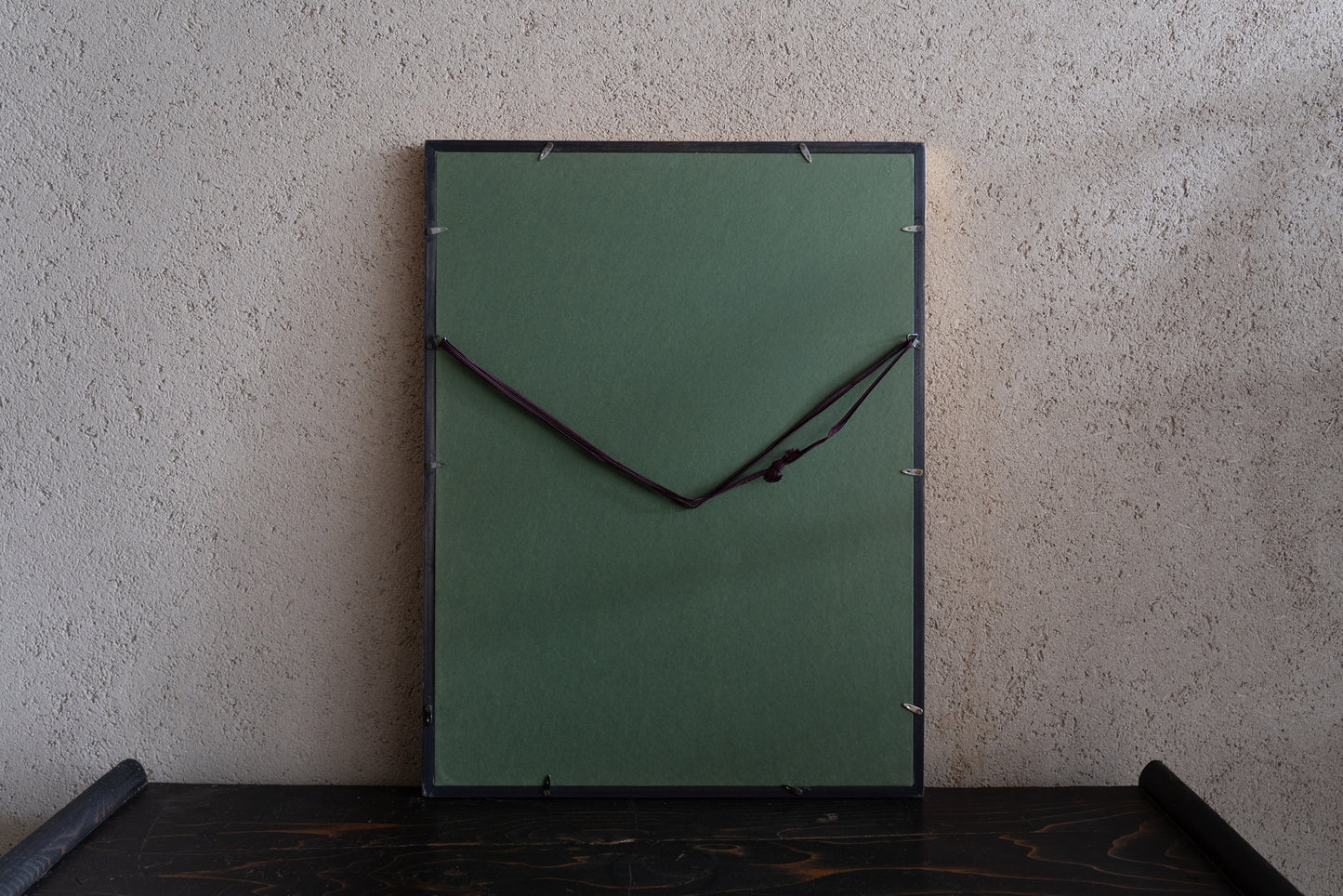Joseon embroidered insignia patch, paired tigers design
- Region/Era Korean Peninsula / Joseon Dynasty 19th Century
- Size 19.0×18.0cm (without frame)
- Condition Good
- Accessory Paper box
- No. 41nk-106
"Insignia patch" refers to the rank insignia sewn onto the chest and back of official uniforms during the Joseon Dynasty .
Called "Hyumbe," it adorned the clothing of civil and military officials from around the end of the 15th century until the abolition of the chest embroidery system at the end of the 19th century. While the crane symbolized civil officials, the tiger chest embroidery was worn by military officials. The double tiger chest embroidery, which features two tigers, was a design that only high-ranking military officials were allowed to use.

In the center, two tigers are positioned glaring at each other. Their bared fangs are a ferocious pose befitting a military officer. The symmetrical arrangement is said to symbolize the Tai Chi, which represents the universe in which yin and yang are one.
The bright blue background with lustrous white fur creates a striking color scheme, surrounded by auspicious clouds in yellow and dark blue.
The grass of immortality grows from the rocky mountain in the lower center. The waves, rocky mountains, and coral are depicted in bright colors based on white, yellow, and light blue.

These chest pieces were made by the embroidery department, a department within the imperial court that specialized in embroidery.
There, artisans known as embroiderers, who had trained in embroidery from a young age and had perfected their skills, produced many works.
The production of embroidery involves various steps, such as creating a rough sketch, weaving the silk fabric, twisting the thread, and sewing. In Miyanui, a dedicated craftsman is assigned to each step, and the pieces are created through collaboration.
Even a single chest and back requires an immense amount of effort and the sophisticated skills of many craftsmen.

The Joseon dynasty was a time when various embroidery crafts developed, including chest and back embroidery, folding screens, and poshagi. Although it may not be as well known as other crafts, many people know that museums specializing in Korean art all over the country have excellent embroidery works in their collections.
The intricate embroidery techniques, which are impossible to reproduce today, the unique color schemes and sophisticated designs exude a sense of elegance.
The following website shows military uniforms with chest and back attached.
https://bunka.nii.ac.jp/heritages/detail/533969 (Cultural Heritage Online)
To pick up and see the actual item in the gallery.
Reservation









